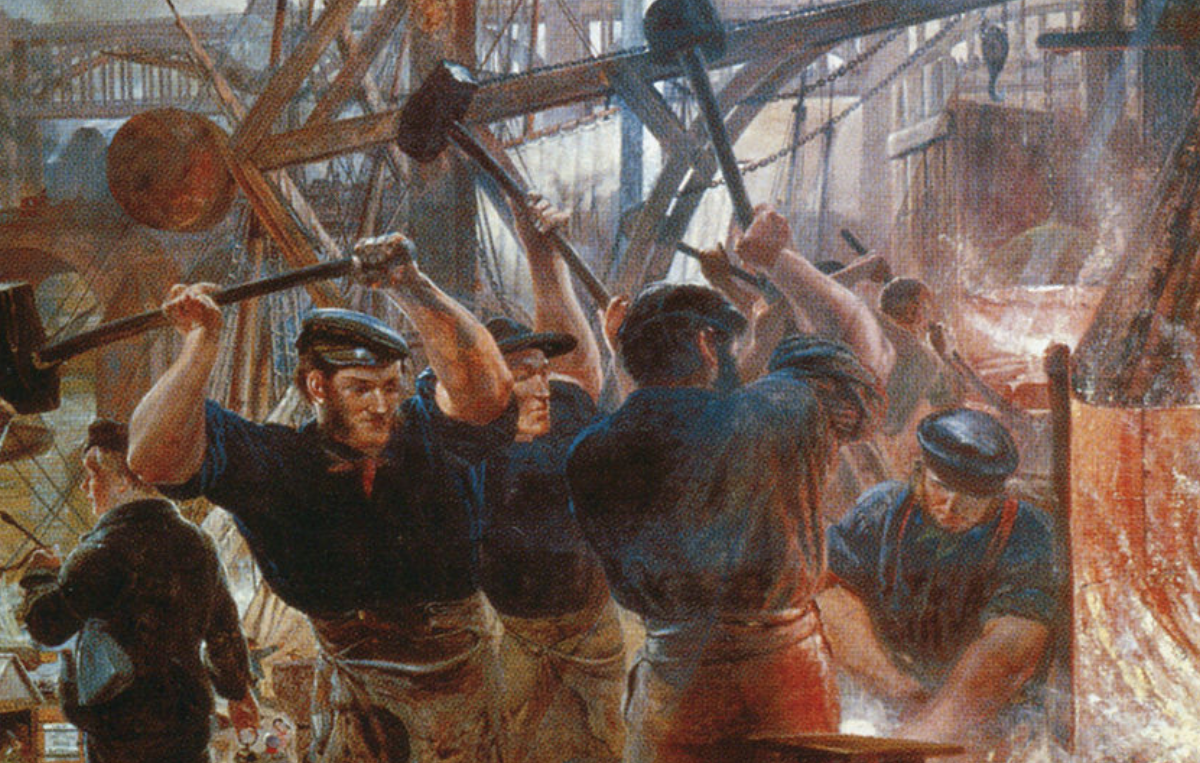
As with the Republican party and the conservative movement in the United States, conservatism in the United Kingdom does not constitute a coherent ideological movement. It is, rather, a coalition of ideological groups and interest groups. Some of these are fairly libertarian in nature, as with the Thatcherites. On the other hand, conservative parties and activist groups also contain traditionalist conservatives and nationalists, neither of which are primarily or necessarily free-market or laissez-faire in orientation. The general free-market orientation of conservatives tend to come from the fact that they are anti-Left and anti-socialist. In the UK, as elsewhere, to be anti-Left means in many cases to be de facto pro-market (to varying extents).
A similar phenomenon has prevailed in the United States and in some cases on the European continent. In the early nineteenth century, for example, to be a conservative in France or Spain generally meant to be in favor of restoring the monarchy or some older hierarchical power structure. In America, conservatism wasn’t even a broadly used term until after the Second World War, and then it largely came to mean being militantly anti-communist. In the US, as in Europe, however, to be conservative eventually meant to be anti-socialist and therefore sympathetic to capitalists.
In the UK, this incidental embrace of economic laissez-faire was much harder to find in the nineteenth century. In that period we find that conservatives were often vehemently opposed to markets, capitalism, and industrialization—all of which were viewed as threats to the old order and “tradition.” This conservative opposition to capitalism often manifested itself in opposition to the Liberal party which was the party of the factory owners, small merchants, industrialists, and the radicals who opposed the old landed gentry. Thus, in 1832, we find conservative Samuel Taylor Coleridge denouncing the middle-class capitalists and “the shopkeepers” for being the “least patriotic and least conservative” members of society.
When it came to wage labor, many conservatives aggressively opposed the rise of the industrial workforce, condemning factory work as a form of slavery and tying the industrialists to the supporters of chattel slavery in the West Indies and the American South where slavery remained legal. In efforts to make these comparisons stick, conservative critics of industrialization invented new terms like “wage slavery,” “factory slaves,” and “white slavery.” Much of the conservatives’ terminology and their arguments would later be adopted by socialists. These terms were valuable in that time period because at the time opposition to chattel slavery within the British public had enjoyed considerable success, culminating with the 1834 Slavery Abolition Act. Tying capitalist labor to chattel slavery was a savvy political move for conservative anti-capitalists.
Of course, not all conservatives (often referred to as Tories) embraced this strategy or this argument. Many conservatives were suspicious of popular movements in general, including those against slavery in the colonies. The Tory radicals were another matter. These traditionalist conservatives rejected industrialization and “the shopkeepers” as manifestations of modernization. As such, the Tory radicals maintained the new industry must be rejected as a threat to the traditional way of life. John McGowan describes the Tory radicals of the first half of the nineteenth century:
As for capitalism, the original Tory Radicals took a truly conservative position; that is, they protested against the very existence of new order and wished to restore an earlier pre-capitalist social reality. … [Tory radicalism] endorses existing arrangements only insofar as they are leftovers from an era predating the Industrial Revolution or represent an attempt to negate the increasing dominance of capitalist forms after 1800.
Of course, the Tory Radicals were not socialists in their anti-capitalism in that they preferred to “reinforce and preserve the traditional social virtues.” This drive to preserve elements of the past extended to economic policy, as well, so Tom O’Shea summarizes the movement this way:
Tory radicals in the early nineteenth century also made use of the language of slavery to condemn the lost freedom of the yeoman and its replacement by the authority of self-interested factory owners and the heartless discipline of a world market.
Perhaps the most famous among these Tory radicals were Coleridge, Richard Oastler, and Thomas Carlyle. Yet one of the most aggressive proponents of the idea of “wage slaves” was the agrarian conservative William Cobbett, an alleged “archaic English Tory.” Cobbett was a nationalist, an anti-republican, and a vehement opponent of the rising industrialist class. Cobbett was so committed to comparing factory workers to chattel slaves, in fact, that he concluded the slaves of the West Indies were better off than the “factory slaves” of England, writing:
these poor, mocked, degraded wretches, [i.e., factory laborers] would be happy to lick the dishes and bowls, out of which the black slaves have breakfasted, dined, or supped …Will not the care, will not the anxiety of the really humane Englishman be directed toward the Whites, instead of towards the Blacks, until at any rate, the situation of the former be made to be a good as that of the latter?
To be fair, Cobbett also decried the state of agricultural workers, yet it was the concept of factory slavery and wage slavery that earned the most attention from radical Tories who demanded a return to an agrarian economy often supplemented by small-scale social welfare programs. Economist Joseph Persky notes the role of conservatives in anti-capitalism meant “[t]his initiative came not from liberals or socialists, but rather from Tory radicals.” This nostalgic yearning for an “idealized patriarchal economy” was imagined to be the antidote to the “degrading” labor of “both the plantation and the factory.”
The primary target of all this rhetoric about white slaves ruled over by “the shopocracy” were often the so-called Manchester liberals led by the libertarian activists Richard Cobden and John Bright. Cobden and Bright, like most liberals, vehemently opposed slavery in British colonies and globally, and publicly supported abolition through Liberal activism and public meetings. Anti-capitalist Tory radicals therefore frequently attempted to paint the libertarians as hypocrites for supposedly enslaving workers in their factories. In some cases, Tory radicals would attempt to co-opt Liberal rallies against slavery and turn the discussion against the alleged white slaves in the factories.
Historian Ralph Raico describes how, in their efforts against the industrial classes, these British anti-capitalists searched the landscape for the worst abuses that could be found among factory workers. These cases were then routinely featured in anti-capitalist literature and political action. Raico notes, however, that the abuses were insufficient to change the minds of the workers themselves who migrated—literally by the millions—from the countryside to more capitalist environs where shop and factory work could be found. While agricultural workers were often forced to spend their winters in a state of near hibernation to avoid starvation, factory workers would experience immense growth in their incomes and standards of living throughout the nineteenth century. Notably, in the Dutch Republic, where the “shopocracy” was clearly ascendant, the state of the poor was among the best in Europe.
Nonetheless, the charge of wage slavery” was frequently employed first by the Tory nostalgists, and then later by Marxists, Chartists, and other radicals of the Left who took up the mantle of anti-capitalism. The concept of the wage slave was also popularized by agrarian conservatives in the United States like John C. Calhoun and George Fitzhugh. In the American case—in contrast to the Tory radicals—the comparison between chattel slavery and factory slavery was intended to increase support for slavery of the chattel variety.
Conservative suspicion of laissez-faire and markets as drivers of “excessive” social and economic change has never disappeared, and the Tory radical program remains relevant even today in understanding what motivates some factions of the conservative coalitions. Nostalgia for the “good old days” remains a powerful emotional drive for many who imagine (wrongly) that populations of simpler (or more agrarian) times enjoyed greater economic security and higher standards of living. Modern conservative critics of free markets and laissez-faire often draw upon similar sentiments about an imagined ideal society.






